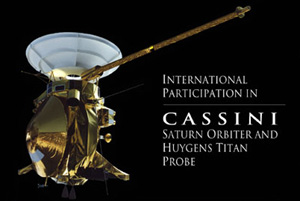Several countries are a part of the Cassini mission.
Click on image for full size
Courtesy of NASA
Cassini
The Cassini probe began its journey to Saturn on
October 15, 1997. It flew by Earth
in August, 1999, before heading towards the distant planet. Cassini passed
Jupiter in 2000 and then burned towards its rendezvous with Saturn in 2004.
Cassini passed close to Saturn's moon Phoebe on June 11, 2004. The spacecraft
fired its main engine for 96 minutes on July 1, 2004 to slow itself down
and go into orbit around Saturn. Cassini's mission at Saturn
is scheduled to last four years.
This $3 billion project is a joint venture between the National Aeronautics
and Space Administration (NASA), the European Space Agency (ESA) and other
nations across the globe. The mission was named after Giovanni
Cassini, who discovered the Cassini
Division in Saturn's rings and several of Saturn's moons.
Cassini carries over 12 instruments that will study Saturn, its rings,
its magnetosphere, some of the icy satellites,
and Titan.
The main spacecraft also carries a small lander called Huygens. The Huygens
Probe will parachute down
through Titan's atmosphere and land on the strange moon.
Cassini uses plutonium as a fuel source instead of solar energy.
Since it is orbiting a planet that is so far out from the Sun,
it would need solar panels the size of tennis courts to capture enough energy to keep it functioning.
You might also be interested in:
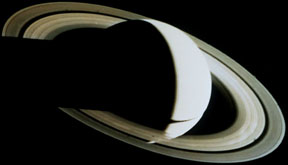
Many people are fascinated by Saturn's rings. Although Saturn isn't the only planet with rings, it is the only planet famous for them. Almost every image or drawing of the planet has the rings included.
...more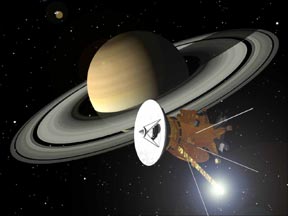
The Cassini spacecraft, en route to Saturn, will zoom past Saturn's odd moon Phoebe on June 11, 2004. Cassini will pass within 2,000 km (1,243 miles) of the moon's surface and should send back images with
...more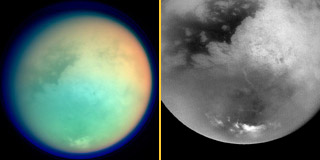
The robotic Cassini spacecraft flew by Saturn's moon Titan on October 26, 2004. Titan is Saturn's largest moon, and has the thickest atmosphere of any moon in our Solar System. Cassini captured what are
...more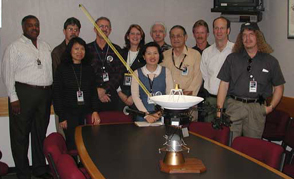
The servicing mission to the Hubble Space Telescope in early March looks to have been a great success. Four weeks after the servicing mission, the Telescope has been declared healthy and fit...and is frankly,
...more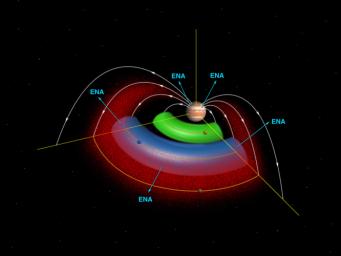
The Galileo mission discovered an amazing thing. Europa has its own atmosphere, although it is very, very thin. This atmosphere is created when fast moving molecules in Jupiter's magnetosphere hit the
...more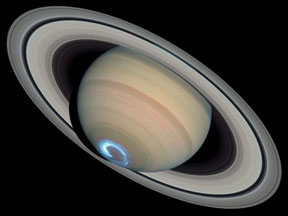
Have you ever seen the Southern or Northern Lights? Did you know that Earth isn't the only planet that puts on these beautiful light shows, also known as the "aurora"? Auroral displays have also been observed
...more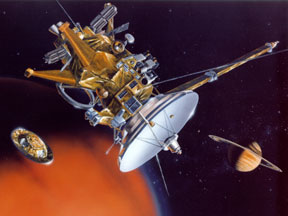
NASA's Cassini spacecraft, which is in orbit around Saturn, released the Huygens probe and sent it on its way to Saturn's largest moon, Titan. The probe, pushed away from the Cassini "mothership"
...more


